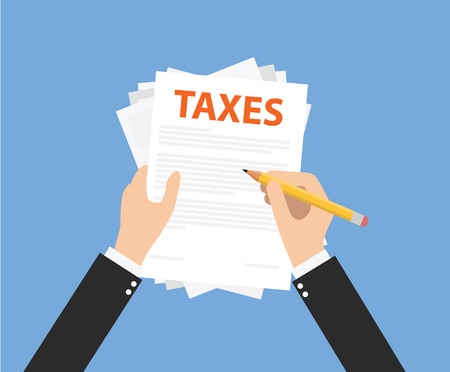Budget 2016: Impact on Individuals
Yesterday, Wednesday 16 March 2016, Chancellor of the Exchequer George Osborne delivered his eighth full Budget to the House of Commons since the Conservatives came into power in 2010; his second since the party’s majority win in May of last year.
Below we’ve summarised the key talking points from Budget 2016 for individuals. You’ll note what the Guardian call a number of “voter-wooing measures” in our summary. With the Brexit vote scheduled for 23 June, the Conservatives were adamant that the forecasts they presented yesterday are predicated on the UK remaining within the European Union.
Keep an eye out for our articles summarising the key talking points from yesterday’s budget for contractors and, separately, small and medium-sized businesses (SMEs), both of which are coming later today.
Personal Allowance to Increase to £11,500
At Budget 2016 Mr. Osborne announced that the Personal Allowance will increase to £11,500 in April 2017, with the higher rate threshold jumping to £45,000.
Before then, however, the current personal allowance of £10,600 is set to rise to £11,000 next month, with the higher rate threshold rising from £42,385 to £43,000.
Capital Gains Tax (CGT) to Reduce from 28-20%
From 6 April 2016 (just three weeks’ time) Capital Gains Tax (CGT) will be reduced from 28-20% for higher rate earners; 18-10% for those paying the basic rate.
Residential property will, however, still be taxed at its current rates, with an eight percent surcharge being payable on top of the new CGT for the residential property itself, and any carried interest that it holds, thus bringing both CGT tax rates back to their former percentage values for residential properties respectively.
ISA Allowance Increases to £20,000, and New Lifetime ISA
From April 2017 the total amount you can save into all ISAs in a given year will increase from £15,240 to £20,000.
The government also announced a new Lifetime ISA which, from April 2017, will allow any adult under the age of forty to save up to £4,000 per year while receiving a 25% bonus on this money from the government. Any money put into your Lifetime ISA can either be saved until you are over sixty and used in your retirement, or withdrawn to purchase a home, if doing so will turn you into a first-time homeowner.
Sugar Tax
In a surprise move the Chancellor has imposed a levy on soft drinks with a total sugar content above 5 grams per 100 millilitres (and an even higher levy for drinks with more than 8 grams per 100 millilitres), from April 2018.
Television chef Jamie Oliver, who has campaigned for a sugar tax for many years (and who personally introduced one in his own restaurants), said yesterday “I never thought they’d do it.” The government noted that the approximately £520m to be raised from the tax will go towards funding school sports programs.
Longer School Days Available to 25% of Secondary Schools
Talking of schools, up to £285 million of funding (some of which coming from the above-mentioned sugar tax) will be set aside to give 25% of secondary schools across the country the option to opt in for longer school days from September 2017, should they so wish.
This comes in tandem with funding aimed at turning every primary and secondary school in the country into an academy by 2022.
Fuel and (Most) Alcohol Duty Frozen
Last in our summary comes a few aforementioned “voter-wooing measures”, including fuel duty being frozen for the sixth year in a row, a measure which the government estimate will save the typical motorist £75 a year.
Rates on spirits, beer, and the majority of ciders will also be frozen for the 2016-17 tax year, and in a measure likely intent on wooing Welsh voters, the crossing toll on the Severn Bridge will be cut in half, down to £3.30.
Understanding Budget 2016
To speak with a professional accountant to discuss the impact of Budget 2016 on you as an individual, or for anything else, contact us today on 020 8780 2349 or get in touch with us via our contact page to arrange a complimentary, no obligation meeting.
If you're a company or contractor, you needn't go to the trouble. Check out our pieces that are best suited to you:
Budget 2016: Key Takeways for Contractors
Budget 2016: Key Takeaways for Companies
3 Ways to Make Tax Efficient Charitable Donations

We all want to receive greater tax efficiency out of our charitable giving; both for the charity, and for us. There are three main ways in which you can make tax efficient charitable donations with either you or them being able to claim tax relief on your donation, these being when you:
- declare (using an appropriate form) that you would like Gift Aid to be added to your donation,
- donate through a Payroll Giving scheme set up by your employer, and
- donate land or certain shares to a charity that agrees to accept your donation.
Gift Aid
Gift Aid is the simplest, and most common, way in which individuals and businesses alike can make tax efficient donations to charity. If you’re a British taxpayer, the Gift Aid scheme allows the charity you’re donating to to reclaim basic rate tax on your donation from HM Revenue and Customs (HMRC), thus increasing the overall value of your donation.
Your donation will only qualify for gift aid if you:
- pay at least as much income tax in a given tax year as the charity (or charities) will reclaim (if you don’t pay income tax, you cannot take advantage of the Gift Aid scheme),
- don’t receive excessive benefits, in any form, for your donation,
- make a Gift Aid declaration (using an appropriate form) that you would like Gift Aid to be added to your donation.
It should be noted that Gift Aid donations can be backdated up to four years. As we wrote in this article from last year, “It’s been suggested that the current declaration form doesn’t make the link between the tax the individual making the donation has already paid and the Gift Aid that can be claimed by the charity they’re donating to; something the upcoming improvements are sure to address.”
Payroll Giving
Donating to charity through a Payroll Giving scheme is a great way to give to charity every time you’re paid by your employer.
In order to make a gift to charity through a Payroll Giving scheme your employer must have already set up the scheme with their business, and you must authorise your employer to gift a certain amount from your pay every month (or however often you’re paid) to a Payroll Giving agency that’s been approved by HMRC. It’s this agency that will then send your gift on to your chosen charity (or charities).
The main benefit of donating to charity through your employer’s Payroll Giving scheme is that your donation is deducted from your pay before the tax you owe is worked out: therefore you receive immediate income tax relief at your current (basic, higher, or additional) tax rate.
For more information on payroll, click here.
Donating Land, Shares
If you decide you’d like to donate land or certain shares to charity, the first thing you need to do is contact the charity (or charities) in question to make sure they are able to accept your donation.
Next you’ll have to ensure that the land or shares you’re looking to donate qualify for tax relief. This is where you’ll want to speak with your accountant in relation to your specific circumstances, but in general the following donations qualify:
- freehold interests in land,
- leasehold interests in land (so long as the lease period is for a term of years absolute),
- shares and securities listed or dealt on the British stock exchange, or recognised overseas stock exchanges,
- holdings in recognised foreign collective investment schemes.
Keep in mind, if you donate any land to a charity it’s essential that they present you with a certificate proving that they have acquired the land from you in order for you to receive tax relief.
Experienced Tax Accountants
To speak with a professional accountant to discuss how you can make tax efficient charitable donations, or for anything else, contact us today on 020 8780 2349 or get in touch with us via our contact page to arrange a complimentary, no obligation meeting.
Homeworking Tax Relief for Your Employees
The rules surrounding small or medium-sized business (SME) tax relief given for homeworking vary depending on whether you’re a sole trader, a partner (within a partnership), or an employee of the SME; even if you are also the owner.
In this article we’re going to be looking at the tax relief available to employees. If you’re an owner-employee, or you employee others who occasionally work from home, it’s important to know that any costs paid for, or reimbursed to, an employee of your company by yourself, the owner, is liable to have tax paid on it. It is the employee’s responsibility to claim the personal tax relief for themselves.
Wholly, Exclusively, and Necessarily
In order for HM Revenue and Customs (HMRC) to award tax relief for employees working from home, it’s up to the employee in question to prove that the costs in question were incurred “wholly, exclusively, and necessarily” while undertaking duties necessary to carrying out their job.
Because HMRC is stricter when it comes to the necessity of employee expenses compared to the self-employed, if you provide something to your employee to aide them in working from home (a work computer, for instance), they are more likely to deem this item necessary to the employee’s work than if the employee themselves had bought a new work computer and wanted to claim tax relief on it.
Place Homeworking Arrangements in Writing
Though not wholly necessary, we would advise you to place all homeworking arrangements with your employees in writing ahead of them taking affect, as your employees won’t be able to claim tax relief on costs associated with carrying out their job from home if they have only been doing so informally.
If you do place this arrangement in writing it will allow you, as the employer, to make payments (or reimbursements) for any additional household expenses your employee requires in order to undertake their job, tax free.
What Your Employees Can Claim Tax Relief On
For the most part this will relate to the additional and proportional costs of lighting and heating the area in which the work is taking place (such as your employee’s home office), as well as the additional and proportional costs associated with increased:
- metered water usage
- internet charges
- business telephone calls
- home contents insurance
To help cover the above costs, you’re allowed to prove your employee with £4.00 per week without having to undergo much formality. Unlike when a self-employed individual works from home, it’s not possible for an employee of your company, even if you yourself are an owner-employee, to claim tax relief on a portion of their rent/mortgage, council tax, or un-metered water rates.
As the employer you will be able to claim capital allowances for the costs of equipment needed by your employees to work from home. This equipment, such as the aforementioned work computer, won’t become a taxable liability for your employee so long as their private (non-work) use of them is insignificant.
For more information on tax relief oppurtunities for your business, click here.
Experienced SME Accountants
To speak with a professional accountant to discuss homeworking tax relief for your employees, or for anything else, contact us today on 020 8780 2349 or get in touch with us via our contact page to arrange a complimentary, no obligation meeting. In the meantime, if you're looking for more information on the different services we have available, check out our services page.
Ban on Anti-Invoice Finance Terms in Work Contracts

From next year (2016) small and micro-businesses across the country will have a new option for growing their business and improving their cash flow thanks to a decision by The Department for Business, Innovations, and Skills (BIS) to allow small business owners the right to secure finance against money owed to them through invoices for all working contracts.
This decision was made possible due to a ban on anti-invoice finance terms, with the ban being seen as a direct method of speeding up economic growth and, as a result, helping to create jobs.
Invoice finance is particularly beneficial for small and micro-businesses because it give them the option to receive the income that’s owed to them sooner, thus avoiding falling into negative cash flow. Speaking on the ban, Small Business Minister Anna Soubry said “While invoice finance may not be right for everyone and is absolutely no excuse for late payment, I want small businesses to have the option of using it to increase their cashflow. This is all part of our plan to maintain the UK’s position as the best place in Europe to start and grow a business.”
What is Invoice Finance?
Invoice finance is a option that allows small and micro-business owners to receive finance for invoices that contain money (often late payments) owed to the business. The Asset Based Finance Association (ABFA) estimate that over 44,000 businesses in the UK receive over £19 billion of invoice finance in this manner at any given time.
Invoice finance allows small and micro-businesses to receive the majority of the money owed to them much faster (often within a standard thirty-day invoicing cycle) than if they simply waited for their customers to pay their invoice.
Regular, positive cash flow is the lifeblood of small business, which is why invoice finance has become increasingly popular among small and micro-businesses in recent years, with the ban on anti-invoice finance terms likely to increase this. Despite this excellent new change, it would still be advised to keep up to date with the best practices on How to Minimise Late Payments.
The Changes
In the past clauses within working contracts looking to prevent sub-contracting would often (and sometimes inadvertently) make it impossible for invoice finance to take place on said contract.
The ban on anti-invoice finance terms in contracts, which was made possible by terms set out in this year’s Small Business, Enterprise and Employment Act, received cross-party support in Parliament, with almost-identical bans in Australia, Canada, and the United States said to confirm its necessity.
Speaking of the importance of small businesses, Small Business Minister Anna Soubry said: “Small businesses are the economic backbone of Britain and we will do everything possible to make sure they continue to grow and create jobs. By scrapping restrictions on invoice finance, thousands of firms across the country could benefit from faster access to hard-fought funds.”
The Federation of Small Businesses was also complimentary of the ban, with National Chairman John Allan stating that “The decision to outlaw the ban on terms in contracts to prevent businesses from choosing who they want to go to for invoice financing is overwhelmingly positive for businesses around the country.”
For more tax information in relation to business, click here.
Experienced Accountants
If you’re looking to start applying for invoice finance, or you just want to know how to go about applying when the time comes, your accountant can work with you to simplify this process.
To speak with a professional accountant to discuss the new anti-invoice finance terms, or for anything else, contact us today on 020 8780 2349 or get in touch with us via our contact page to arrange a complimentary, no obligation meeting.
SME Taxes You Should Know About
If you’re a small or medium-sized business (SME) owner there are a few taxes that you should know about in order to stay on top of what you owe.
Though not all of the below taxes will apply to your current tax situation, it’s helpful to be aware of all that may show up during the lifespan of your business to make sure you’re not taken by surprise. If you’re not yet working with an accountant you should consider hiring one immediately, as they can keep you up to date with your tax liabilities to ensure you’re always paying what you owe, when you owe it.
Income Tax
If you run your business as a sole trader the most important (and expensive) tax you should be aware of is income tax, which you’ll have to pay on your small business’s profits in the same way that an employed person pays income tax on their monthly earnings.
You pay income tax on your business’s profits over the personal allowance, which is currently set at £10,600 per year (2015-16) for those under seventy-five. If you run your business as a limited company you’ll be required to pay income tax on any salary or dividends you receive from your company over £10,600; including income from any other job or dividends from a second company.
National Insurance Contributions
National Insurance Contributions (NICs) are paid by SME owners and employed people alike, though the method of payment is different for those running their own business.
If you run your business as a sole trader you’re required to pay two different kinds of National Insurance; Class 2 and Class 4. The former is a flat weekly rate of £2.80, unless your business’s profits are under the newly-introduced Small Profits Threshold of £5,965 per year, in which case you’ll be exempt from Class 2 National Insurance. If your small business’s profits are £8,060 or more per year you’ll also be required to pay Class 4 National Insurance, which is set at 9 percent of your business’s profits up to £42,385, and just 2 percent thereafter (2015-16). From April 2016 Class 2 and Class 4 National Insurance Contributions are to be combined.
If you run your business as a limited company and you receive a salary of £8,060 or more per year then your business will have to pay Class 1 National Insurance on your salary.
Corporation Tax
If you run your business as a limited company you’ll have to pay Corporation Tax on all profits immediately, so long as you business hasn’t previously made a loss under which Corporation Tax can temporarily be offset against.
Corporation Tax is currently set at 20 percent (2015-16). It must be paid nine months and a day after the end of your business’s accounting period; this being something your accountant will make you aware of to maximise your cash flow.
Value Added Tax (VAT)
Value Added Tax (VAT) is payable by businesses operating as sole traders, partnerships, or limited companies if you make sales that should have VAT charged on them (known as the VAT taxable turnover) of more than £82,000 per year.
If you believe you’ll have a VAT taxable turnover of more than £82,000 in the next twelve months you or your accountant should register your business for VAT as soon as possible, to ensure any necessary payments can go through on time. VAT is charged at three rates; 20 percent (standard), 5 percent (reduced), and 0 percent (zero rate).
More Information from Experienced SME Accountants
To speak with a professional accountant to discuss the taxes you’re likely to come up against as an SME owner (including business rates, not discussed here) contact us today on 020 8780 2349 or get in touch with us via our contact page to arrange a complimentary, no obligation meeting.
Alternatively, take a look at our other tax related pieces to further increase your knowledge:
Homeworking Tax Relief for Your Employees
3 Ways to Make Tax Efficient Charitable Donations
For a wealth of information on most accountancy related issues, feel free to have a read of our blog too.
Tools for SME Accounting and Assessing Business Performance
Here at Tax Agility we’re the first to recognise that, despite the fact that keeping in regular contact with your accountant is the key to ensuring your small or medium-sized business (SME) remains in good shape, it’s still helpful to have access to certain accountancy and business assessment tools that you can take advantage of between meetings and phone calls with your accountant.
For this reason, we felt that it was about time for us to publicly recommend some of the tools we frequently suggest our clients look into. Using any one of these tools you’ll be able to measure your SME’s performance, almost in real time, against certain Key Performance Indicator (KPIs).
Xero
Pitching themselves as “Beautiful accounting software,” we are experts in Xero’s easy-to-use platform and, should you wish to use it to keep a constant eye on your small business’s financials, we’ll be happy to get you set up in no time.
FreeAgent
Though all accounting tools in this list can be used by freelancers, FreeAgent is the only one that is actively going after the freelancer crowd, making it easy for you to see your expenses, track the amount of time you spent on any one project, and send estimates and invoices.
ClearBooks
ClearBooks provide a simple online application for you to keep an eye on (or entirely manage) your accounting, payroll, HR, and final accounts. Should you wish to use ClearBooks we’ll be happy to set you up on their platform.
QuickBooks
Staying on the ‘books’ theme, QuickBooks is popular among small business owners and accountants alike, with features allowing you to accept payments, send invoices, track sales and expenses, and manage Value Added Tax (VAT), to name but a few.
What KPIs Can You Derive from Your Accounting
As your accountants here at Tax Agility, it’s our job to ensure you’re being kept up to date with the status of your Key Performance Indicators either whenever we look through your accounts, or on a pre-arranged timescale.
If you wish to assess your small business’s performance outside of these times, however, it’s good to have an idea of all the possible KPIs you can derive from your accounting tool of choice. For example:
- Debtor days: What is current average number of days it takes between you issuing a customer with an invoice and that invoice being fulfilled?
- Gross margin: What margin (the revenue minus profit) are you currently operating in? This can be calculated for individual items or your entire business.
- Inventory turnover: How much inventory are you turning over (selling) in a given time frame?
- Debt ratio: What portion of your small business’s assets are currently financed by debt? This figure is indicated as a percentage.
- Net profit margin: What is your net profit margin in a certain time frame (often calculated over a quarter or a year).
Experienced Tax Accountants
To speak with a professional accountant to discuss the best (and easiest to use) tools available for assessing your small business’s performance, contact us today on 020 8780 2349 or get in touch with us via our contact page to arrange a complimentary, no obligation meeting.
If you're not quite ready to pick up the phone and are simply looking to develop some knowledge on the wonderful world of accounting, feel free to read our blog. More specifically, our pieces that are specific to accounting.
How to Minimise Late Payments
As a small or medium-sized business (SME) owner it’s essential that you’re paid on time by your customers, as having strong cash flow; payments coming into your business on a regular and timely basis; is absolutely essential to the success of your company, especially in the beginning.
Late payments are a natural part of doing business, but this doesn’t mean they can’t be minimised when you take consistent and appropriate steps to vet your clients and customers, provide them with multiple methods of payment, and, should it become necessary, apply interest charges to late payments.
With a recent YouGov poll approximating that 85 percent of all small or medium-sized businesses across Britain have had to deal with late non-payments by their clients and customers at some point, knowing how to minimise late payments will put you ahead of your competition in ensuring that every invoice you send out, gets paid.
1) Do Your Homework
The number one way of knowing whether a new client or customer is going to pay their invoices on time is by doing your homework by checking their credit ratings; much like companies that bill your business (or you personally) on a multi-part basis will check your credit rating ahead of time to provide them with historic assurance that you’re likely to pay their bills.
Unlike with larger companies, where the threat of being taken to court for not paying an invoice looms large, SME’s are historically taken advantage when it comes to late and non-payment. When you check a new client or customer’s credit rating ahead of doing business with them, you dramatically reduce this risk.
2) Provide Multiple Methods of Payment
Though this shouldn’t be necessary, if providing alternative payment methods to your current list increases the chances of a customer or client paying on time, it’s worth it (assuming a particular payment method doesn’t charge extortionately-high fees).
If your client tells you they’ve popped a cheque in the post (but it won’t arrive for several days), if they were late in sending out their cheque in the first place it’s within your right to ask them to pay you using a different method, with the more options you provide them reducing their excuses for not getting their payment to you as soon as possible.
3) Always Apply Interest to Late Payments
Of course sometimes, despite your best efforts to reduce such a scenario, a client or customer will still hold out on paying you for as long as possible.
For this reason, you should consider adopting a policy whereby you always apply interest to late payments. British companies have a statutory right to charge interest on late payments, with this interest rate currently set at 8 percent. With that said, you should be wary of applying interest to late payments by your regular clients and customers (as well as newer customers spending a lot of money), as you’ll want to preserve a good relationship with them. Should late payment continue, however, you should look into sending a late-payment reminder letter, followed by a second reminder letter, followed by a final reminder letter detailing the interest they are about to be charged, and any legal proceedings and debt collection services you are intending to employ.
You'll be glad to know that in addition to these top tips, managing your businesses cash flow has recently been made a whole lot easier with a ban on anti-invoice finance terms. Click the link to find out more.
Experienced SME Accountants
To speak with a professional accountant to discuss how we can help you keep track of any late and non-payments by your clients and customers, contact us today on 020 8780 2349 or get in touch with us via our contact page to arrange a complimentary, no obligation meeting.
Alternatively, feel free to read our blog for industry information from the experts perspective.
Claiming R&D Relief is Now Faster and Easier

The new Research and Development (R&D) plan, which came into effect last month, has been designed to simplify the process of R&D relief claims for small and medium-sized businesses, while making an effort to increase awareness of the relief among small business owners who are already investing in this area.
With the new Research and Development (R&D) plan the government have handed a boon to small business owners who have previously been put off by the high cost of entry into spaces and sectors that require a substantial amount of research and (ultimately) product development before they can even think about turning a profit.
Financial secretary to the Treasury, David Gauke, said of the new plan:
“R&D is crucial for the long-term growth of the UK economy. Over 15,000 SMEs claimed the relief in 2013, an increase of around 19 per cent from the previous year, but we need to go further to support pioneering small businesses. That’s why we’ve published a document setting out our plans to increase awareness and make it easier for people to apply.”
Claiming is Now Faster, Easier
Here at Tax Agility we believe you should claim all the tax relief your small business is owed in order to maximise your take-home pay. The new Research and Development (R&D) tax relief is no exception.
According to government figures, the 15,000 plus small and medium-sized businesses who claimed R&D tax relief in the 2013-14 tax year received £1.75 billion in tax relief during this period, a saving that is as beneficial to British innovation than it is to the companies themselves.
For this reason alone, the government are striving to make the application process faster and easier for small business owners so they can begin investing in R&D as soon as possible, safe in the knowledge that they’re receiving the tax relief they’re entitled to. Producing an infographic entitled Making R&D Tax Relief Easier, the government outlined the four areas in which they’re working to improve access to R&D tax relief (awareness, design, understanding, and administration), alongside the ways in which they’ve achieved this this year, and the ways in which they plan to continue achieving this in the next two years.
Requirements
In order for your small business to receive the R&D tax relief you must have an annual turnover under £2 million, and you must have fewer than 50 employees.
If you meet these specifications and you wish to receive the relief for any planned (or continuing) R&D in your company’s field, you can receive advance assurance on the R&D tax relief from the government, providing you with some much needed certainty surrounding the tax you’ll be paying, and the reliefs you’ll be able to claim against it, going forward.
Experienced Tax Accountants
To speak with a professional accountant to discuss the tax implications of the new Research and Development (R&D) plan, or for anything else, contact us today on 020 8780 2349 or get in touch with us via our contact page to arrange a complimentary, no obligation meeting.
For information on further government incentives in the form of tax relief, click here.
Financing Your Small Business in 2016

We appreciate that, in this day and age, financing your small business can be difficult. That's why we're here to help guide you along the way.
Though not all of the below options will be available to you and your business, they each provide options for financing SME growth that have either been long-time favourites (see: investment finance, loans and overdrafts), or that are becoming more popular every year (see: crowdfunding and presales).
Keep in mind that before looking too deeply into any of these options, you should consider exactly how much financing your business needs (a monetary value) to achieve its current growth goals.
Investment Finance
Investment financing comes in many forms, from angel investors looking to help get your startup off the ground in exchange for a (potentially) 10 percent or greater stake in your business, to venture capitalists offering you a much greater amount of investment income, for a much smaller stake, once your startup has begun to prove itself. Both of which can prove a lucrative solution to financing your small business.
If you're interested in the different types of business financing, click here.
Loans and Overdrafts
Financing your small business with loans and overdraft income provides you with the benefit of getting necessary financing without having to give away any of your company, but unlike receiving investment finance, loans and overdraft financing can be very inflexible and, in the case of overdrafts, you may have to repay them on demand. This presents a company wide risk that could leave you on the back foot.
Government Grants
Government grants are an excellent source of SME and startup financing, especially if you’re lucky enough to be rewarded one with no strings attached. Naturally, however, competition for these grants is tough, and although it’s good to apply for any grants your business could potentially be considered for, be sure to look into other methods of financing as well.
The EIS and SEIS
We’ve spoken about the Enterprise Investment Scheme (EIS) and Seed Enterprise Investment Scheme (SEIS) numerous times on Tax Agility in the past, so we’ll keep this section short. For more information on both, follow the links above.
Invoice Financing
Though arguably the least exciting method of SME financing on this list, invoice financing consists of:
- Factoring: An invoice financier pays you a percentage of each invoice owed upfront, then collects the money owed by your customers, before handing you the remainder and you paying them their fees, and
- Invoice Discounting: Similar to factoring, except an invoice financier lends you money against your unpaid invoices, with you paying them a fee. Once your customers pay these invoices, the remainder goes directly to your invoice financier.
Update: Ban on Anti-Invoice Finance Terms makes Invoice Financing even easier.
Crowdfunding
Online crowdfunding has been with us for several years now, and it doesn’t look set to go away any time soon. The draw is obvious: for a startup looking to get off the ground, crowdsourcing provides them with a platform from which to advertise their products and services while raising finance relatively quickly from around the world.
Presales
Similar to crowdfunding, online presales allow startups to raise financing before they even produce their product by successfully advertising your soon-to-be product on their platform, asking for your customers to pre-order (and pay for) the product before it’s made, then using the money generated to go away and physically produce your product.
Experienced Accountants
To speak with a professional accountant to discuss the preferred methods for financing your small business or startup, or for anything else, contact us today on 020 8780 2349 or get in touch with us via our contact page to arrange a complimentary, no obligation meeting.
Expanding Your Small Business Overseas?

If you’re a small business owner wondering about the potential of doing business overseas, you’ll be pleased to hear that this is something the government are currently trying to get behind as a part of their ‘Business is Great Britain’ campaign:
“Businesses who choose to sell overseas become 34% more productive in their first year while those already selling overseas achieve 59% faster productivity growth than non-exporters. UKTI can help you succeed overseas. The figures are compelling: on average businesses earn £100,000 in additional sales within 18 months of working with UKTI. This could be you.”
But what exactly are the benefits, risks, and considerations you should keep in mind before taking the plunge and expanding your (hopefully already successful) small business into new lands? According to the above-mentioned UKTI (UK Trade & Investment):
“With global online retail sales increasing by 17 per cent per annum, the opportunities for British businesses are huge.”
That’s reason enough, to start. So, here at Tax Agility, we decided to produce an informative piece on doing so.
The Benefits of Doing Business Overseas
There are, as we’ve already touched upon, many benefits to expanding your small business overseas, some of which are downright obvious, while others you may not even have considered:
- You open your small business up to more customers and, with it, more revenue.
- Your business won’t be dependent on the British market alone.
- You’ll improve your business’s efficiency abroad and at home.
- You’ll gain a competitive advantage at home thanks to the inspiration, learnings, and general skills you learn from the overseas side of your business.
The Risks of Doing Business Overseas
Of course, as with any reward comes risk, with the risks of expanding your small business overseas numerous. It’s always important to go into a foreign situation (both literal and metaphorical) with your eyes wide open:
- Do your research: Thoroughly research the countries you’re looking to expand your small business into. Contact an International Trade Adviser at UKTI; they’ll help you to research your target markets and new potential customers.
- Speak with your bank: There’s a good chance you won’t gain a return on investment in your first year.
- Perform a strong risk assessment: Assess the risks of everything from the likelihood of your new customers actually paying you on time (or at all), to the quality of the insurance options that are available to both you and your suppliers.
Considerations When Doing Business Overseas
There are an enormous number of things to consider before expanding your small business overseas, some of which were touched upon in the ‘risks’ section above, while others must be considered on a case-by-case basis.
If you haven’t already we would recommend you meet with an International Trade Adviser at UKTI. According to their website you can usually get an appointment with one within just a few weeks. In general, these advisers have all worked at senior levels in international commerce. Quoted from the UKTI website:
”Think of an ITA as a ‘facilitator’ to help you make an honest assessment of the potential of your business to sell overseas. An ITA can also point you in the right direction to take these conversations further.”
Your ITA can work with you on issues such as determining demand for your product or service overseas, researching suppliers, translators, and going through due diligence processes, as well as the helping you to look into tax withholdings and any dual taxation treaty between the UK and the country you’re looking to expand into.
Experienced Tax Accountants
To speak with a professional accountant to discuss the potential tax implications of expanding your small business overseas, contact us today on 020 8780 2349 or get in touch with us via our contact page to arrange a complimentary, no obligation meeting.
Alternatively, if you're just reading our pieces out of curiosity in a bid to broaden your horizons, feel free to have a read of our blog for the latest information on the industry.








